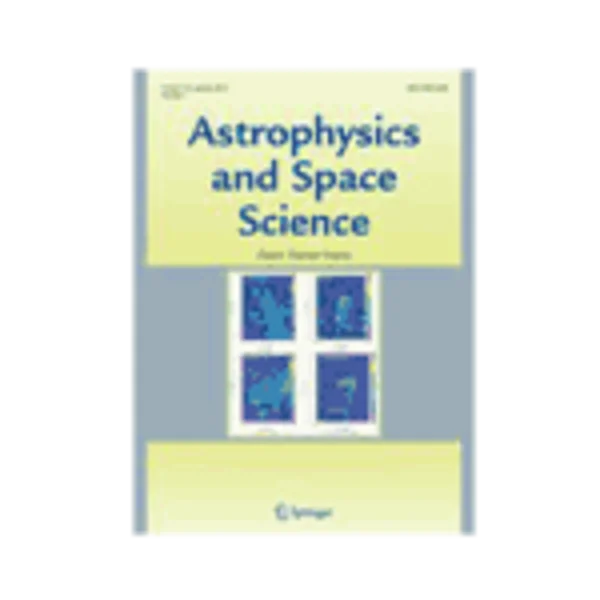-
building the cosmic distance scale: from hipparcos to gaia
جزئیات بیشتر مقاله- تاریخ ارائه: 1392/07/24
- تاریخ انتشار در تی پی بین: 1392/07/24
- تعداد بازدید: 1391
- تعداد پرسش و پاسخ ها: 0
- شماره تماس دبیرخانه رویداد: -
hipparcos, the first ever experiment of global astrometry, was launched by esa (european space agency) in 1989 and its results published in 1997 (perryman et al. in astron. astrophys. 323:l49,1997; perryman & esa (eds.) in the hipparcos and tycho catalogues, esa sp-1200, 1997). a new reduction was later performed using an improved satellite attitude reconstruction leading to an improved accuracy for stars brighter than 9th magnitude (van leeuwen & fantino in astron. astrophys. 439:791, 2005; van leeuwen in astron. astrophys. 474:653, 2007a). the hipparcos catalogue provided an extended dataset of very accurate astrometric data (positions, trigonometric parallaxes and proper motions), enlarging by two orders of magnitude the quantity and quality of distance determinations and luminosity calibrations. the availability of more than 20 000 stars (22 000 for the original catalogue, 30 000 for the re-reduction) with a trigonometric parallax known to better than 10% opened the way to a drastic revision of our 3-d knowledge of the solar neighbourhood and to a renewal of the calibration of many distance indicators and age estimations. the prospects opened by gaia, the next esa cornerstone, planned for launch in 2013 (perryman et al., in astron. astrophys. 369:339, 2001), are still much more dramatic: a billion objects with systematic and quasi simultaneous astrometric, spectrophotometric and spectroscopic observations, about 150 million stars with expected distances to better than 10%, all over the galaxy. all stellar distance indicators, in very large numbers, will be directly measured, providing a direct calibration of their luminosity and making possible detailed studies of the impacts of various effects linked to chemical element abundances, age or cluster membership. with the help of simulations of the data expected from gaia, obtained from the mission simulator developed by dpac (gaia data processing and analysis consortium), we will illustrate what gaia can provide with some selected examples.
مقالات جدیدترین رویدادها
-
استفاده از تحلیل اهمیت-عملکرد در ارائه الگوی مدیریت خلاقیت سازمانی و ارائه راهکار جهت بهبود
-
بررسی تاثیر ارزش وجوه نقد مازاد بر ساختار سرمایه شرکت های پذیرفته شده در بورس اوراق بهادار تهران
-
بررسی تأثیر سطح افشای ریسک بر قرارداد بدهی شرکت های پذیرفته شده در بورس اوراق بهادار تهران
-
بررسی تأثیر رتبه بندی اعتباری مبتنی بر مدل امتیاز بازار نوظهور بر نقد شوندگی سهام با تأکید بر خصوصی سازی شرکت ها
-
تأثیر آمیخته بازاریابی پوشاک ایرانی بر تصویر ذهنی مشتری پوشاک ایرانی (هاکوپیان)
-
شناخت اولویت عوامل موثر بر پویایی مطالعات مهندسی ارزش با رویکرد دیماتل
-
مولفه های هویت ساز در چشم انداز آینده معماری پایدار ایران
-
رفتارسنجی و ابزار دقیق در سدها
-
بررسی عوامل پیش آیندی قصد خرید آنلاین با تاکید بر نگرش به رهبران عقیده و نگرش به برند (مورد مطالعه: کاربران شبکه اینستاگرام)
-
اثر بخشی آموزش مبتنی بر الگوی مفهوم محور بر رشد مهارت حل مسئله در درس علوم ابتدایی
مقالات جدیدترین ژورنال ها
-
مدیریت و بررسی افسردگی دانش آموزان دختر مقطع متوسطه دوم در دروان کرونا در شهرستان دزفول
-
مدیریت و بررسی خرد سیاسی در اندیشه ی فردوسی در ادب ایران
-
واکاوی و مدیریت توصیفی قلمدان(جاکلیدی)ضریح در موزه آستان قدس رضوی
-
بررسی تاثیر خلاقیت، دانش و انگیزه کارکنان بر پیشنهادات نوآورانه کارکنان ( مورد مطالعه: هتل های 3 و 4 ستاره استان کرمان)
-
بررسی تاثیر کیفیت سیستم های اطلاعاتی بر تصمیم گیری موفق در شرکتهای تولیدی استان اصفهان (مورد مطالعه: مدیران شرکتهای تولیدی استان اصفهان)
-
تأثیر شناخت و هیجانات در میزان رضایت و تمایلات رفتاری از دیدگاه بازدیدکنندگان کاخ موزه
-
طلاق در نظام حقوقی ایران با مطالعه تطبیقی در حقوق هندوستان
-
بررسی رابطه سلامت روان و ادراک کارکنان از سبک مدیریت مدیران با عملکرد شغلی کارکنان
-
the effectiveness of sensory integration, emphasizing the proprioceptive and vestibular senses on children academic achievement suffering from attention deficit hyperactivity disorder
-
an analysis of shoreline changes using combined multitemporal remote sensing and digital evaluation model




سوال خود را در مورد این مقاله مطرح نمایید :